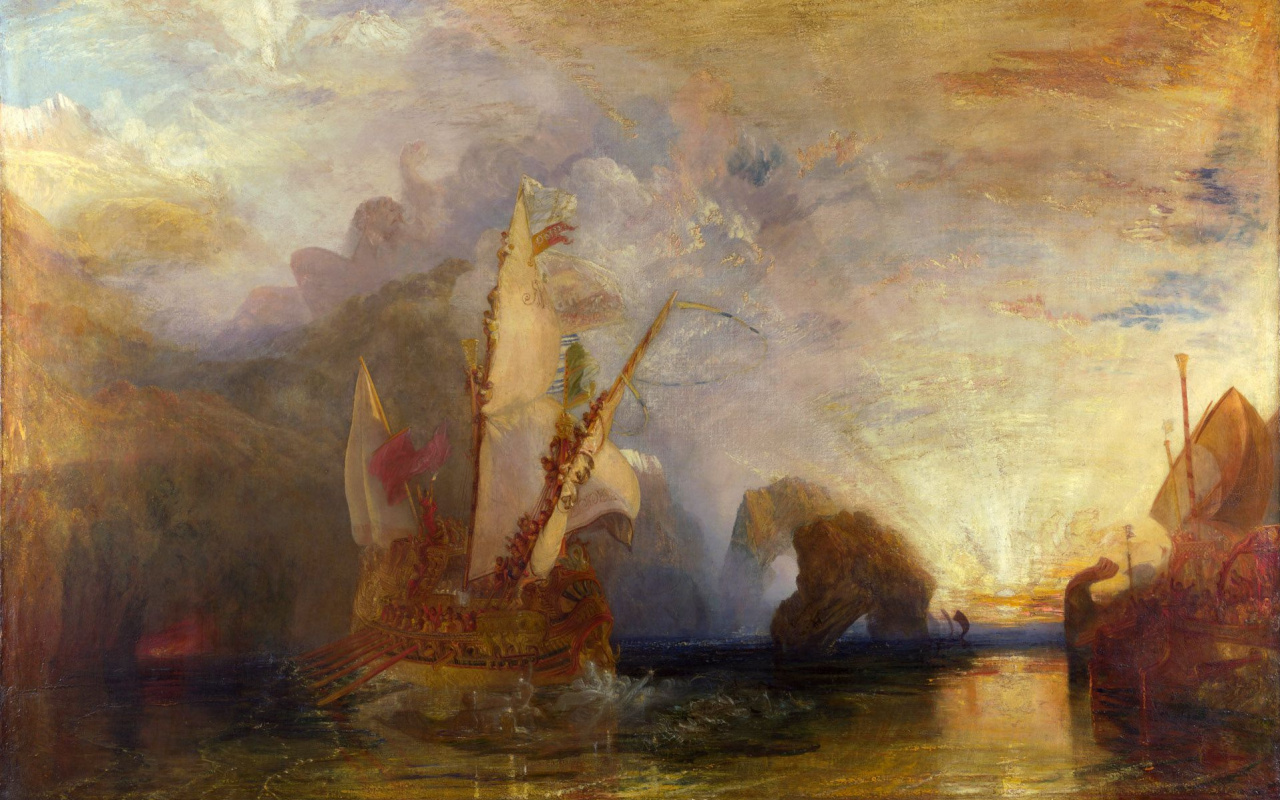log in
Enter site
Login to use Arthive functionality to the maximum
Ulysses taunts Polyphemos
Joseph Mallord William Turner • Painting, 1829, 132.5×203 cm
Description of the artwork «Ulysses taunts Polyphemos»
Ulysses taunts Polyphemos in the ninth Chapter of Homer's Odyssey. Let us briefly recall. Cyclops Polyphemus captured Odysseus (Ulysses) and his companions, returning from the Trojan war. Unfriendly Polyphemus managed to reduce the number of the companions of Odysseus for a few people, providing themselves with dinner. Odyssey opening in this perspective, the prospects did not like, and he decided to resist them. Through this good intention he burned the Cyclops his one good eye, after which the companions boarded the ship and sailed away. The painting depicts the moment when the ship departed on safe distance, and daring Odysseus to Lord it over the defeated enemy. It is a text background. While Turner himself once said that writing a picture it emboldened not Homer, and the song in a pantomime called "Romance Med":
I sing about the cave of Polyphemus.
The poor guy fell in the life of the hour:
Ulysses first ate his lamb,
And then a stick and knocked his eye out.
In any case, a glance at the picture to understand: the main thing here –not a literary story, and incredible light effects created by the artist. Majestic, Regal sun rising in the distance and flood it with its light sea, solemn – or not say – the sky, perfectly written vehicles, illuminated by the sunlight. That's what the picture of Turner, who managed a unique way to combine nature and myth. Even the figure of the Cyclops is not at first sight distinguishable and at first looks like an accumulation of clouds (top left of the canvas). In the midst of the sunlight, you can distinguish the figures of horses, symbolizing the chariot of Apollo. And if you look at the tints and reflections of the water around the ship will see the sea nymphs Nereids accompanying the ship.
Shortly before the writing of "Ulysses, mocks Polifemo" Turner was in Italy. And there is a version that this unique shining light has an Italian accent. John Ruskin – the most violent of his contemporaries a fan of his work - he considered this painting "the Central picture in Turner's career".
Author: Alain Esaulova
I sing about the cave of Polyphemus.
The poor guy fell in the life of the hour:
Ulysses first ate his lamb,
And then a stick and knocked his eye out.
In any case, a glance at the picture to understand: the main thing here –not a literary story, and incredible light effects created by the artist. Majestic, Regal sun rising in the distance and flood it with its light sea, solemn – or not say – the sky, perfectly written vehicles, illuminated by the sunlight. That's what the picture of Turner, who managed a unique way to combine nature and myth. Even the figure of the Cyclops is not at first sight distinguishable and at first looks like an accumulation of clouds (top left of the canvas). In the midst of the sunlight, you can distinguish the figures of horses, symbolizing the chariot of Apollo. And if you look at the tints and reflections of the water around the ship will see the sea nymphs Nereids accompanying the ship.
Shortly before the writing of "Ulysses, mocks Polifemo" Turner was in Italy. And there is a version that this unique shining light has an Italian accent. John Ruskin – the most violent of his contemporaries a fan of his work - he considered this painting "the Central picture in Turner's career".
Author: Alain Esaulova


